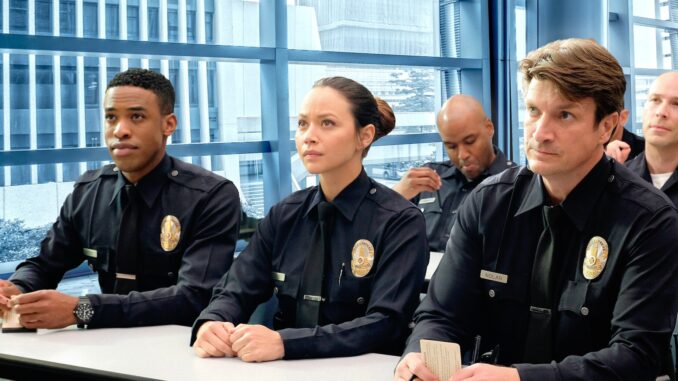
The tragic incident on the set of Rust involving Alec Baldwin has reignited a critical conversation in Hollywood: the safety risks of using real guns as props. This accident, which resulted in the death of cinematographer Halyna Hutchins, has prompted filmmakers, unions, and audiences to call for stricter safety protocols or a total ban on real firearms in movie production.
The Alec Baldwin Incident
What Happened on Set
During a rehearsal for the film Rust, Alec Baldwin discharged a prop gun that was supposed to be safe. Tragically, it was loaded with a live round, killing Hutchins and injuring director Joel Souza. This incident exposed glaring safety lapses and sparked industry-wide outrage.
Immediate Industry Reactions
The entertainment world responded swiftly. Safety concerns, previously overlooked in favor of realism, are now under intense scrutiny. Filmmakers and actors are demanding changes to ensure such accidents never happen again.
Current Use of Real Guns in Filmmaking
Tradition vs. Technology
For decades, filmmakers have used real guns to create authenticity on screen. The flash, recoil, and sound of a real firearm are difficult to replicate, but advances in CGI and airsoft alternatives have made realistic effects achievable without endangering lives.
Industry Standards and Loopholes
While some productions follow strict protocols, there is no universal standard mandating the exclusive use of fake firearms. This gap has led to inconsistent safety measures, increasing the risk of accidents.
Arguments for Banning Real Guns
Safety First
The most compelling reason to ban real guns is preventing accidents. As seen with Rust, even experienced actors can make mistakes, and one lapse can be fatal.
Legal Liability
Producers and studios face potential lawsuits when real firearms are used, making liability a serious concern. Banning them could reduce legal exposure and protect everyone on set.
Moral Responsibility
Filmmakers have a moral obligation to protect cast and crew. The death of a crew member on set is a tragedy that could have been prevented with safer alternatives.
Alternatives to Real Guns

Prop Guns and Replicas
Modern prop firearms and replicas can mimic real guns convincingly without firing live ammunition. They can be enhanced with sound effects, smoke, and CGI to simulate realistic shooting.
Digital Effects
Advances in computer-generated imagery (CGI) allow filmmakers to add gunfire, muzzle flashes, and shell ejections post-production, eliminating on-set danger entirely.
Airsoft and Rubber Guns
Airsoft guns, with proper modifications, provide the visual realism of real firearms and can be safely fired on set with non-lethal projectiles.
Industry Reactions and Statements
Unions Speak Out
The Screen Actors Guild (SAG-AFTRA) and other unions have called for mandatory safety protocols and reconsideration of real guns in productions. They emphasize that no scene is worth risking human life.
Filmmakers Push for Change
Directors and producers are advocating for regulations requiring comprehensive safety training, strict gun checks, and the use of alternatives wherever possible.
Public Support
Audiences have also voiced their concerns online, urging studios to prioritize safety over authenticity in action scenes.
Case Studies: Safer Sets Around the World
European and Asian Productions
Many European and Asian productions already ban real guns or use heavily modified replicas. These practices have reduced accidents and maintained visual authenticity.
Successful Use of CGI
Films like John Wick and Mission: Impossible employ a combination of prop guns and CGI to achieve realistic action without endangering the crew.
Challenges in Implementing a Ban
Resistance from Traditionalists
Some directors argue that real guns provide a level of realism that props cannot match. Convincing these filmmakers to adapt can be challenging.
Budget Constraints
Implementing digital effects or specialized props can increase production costs, a concern for lower-budget projects.
Training and Protocol Development
Creating universal safety protocols requires industry-wide cooperation, standardized training, and enforcement mechanisms.
Legal Implications
Potential Legislation
There is growing discussion in Hollywood about introducing laws restricting the use of live firearms on set, similar to workplace safety regulations in other industries.
Insurance Policies
Studios may face stricter insurance requirements if real guns continue to be used, incentivizing the switch to safer alternatives.
Impact on Actors
Actor Safety Concerns
Performers have become increasingly vocal about on-set safety, demanding that studios prioritize protective measures over realism.
Training and Preparedness
Even skilled actors are not immune to accidents. Comprehensive firearm training is essential, but eliminating live rounds provides the most reliable safeguard.
Cultural Shifts in Filmmaking
From Tradition to Safety
Hollywood is slowly shifting from valuing traditional realism to emphasizing worker safety, influenced by social awareness and recent tragedies.
Audience Awareness
Viewers are becoming more conscious of behind-the-scenes risks and increasingly support safer filmmaking practices.
Potential for Industry-Wide Reform
Establishing Universal Guidelines
Creating mandatory safety standards for firearms on set could prevent future tragedies and set a new benchmark for the industry.
Incentivizing Safe Alternatives
Studios can encourage the use of prop guns, CGI, and airsoft weapons through tax incentives or industry awards recognizing safe production practices.
Conclusion
The tragic Alec Baldwin incident serves as a wake-up call for Hollywood. Real guns on set pose an unacceptable risk to human life, and the industry must seriously consider banning them in favor of safer alternatives. By embracing prop weapons, CGI, and enhanced safety protocols, filmmakers can preserve realism while protecting cast and crew. The conversation sparked by this tragedy may ultimately redefine filmmaking practices, making safety a top priority in every production.
